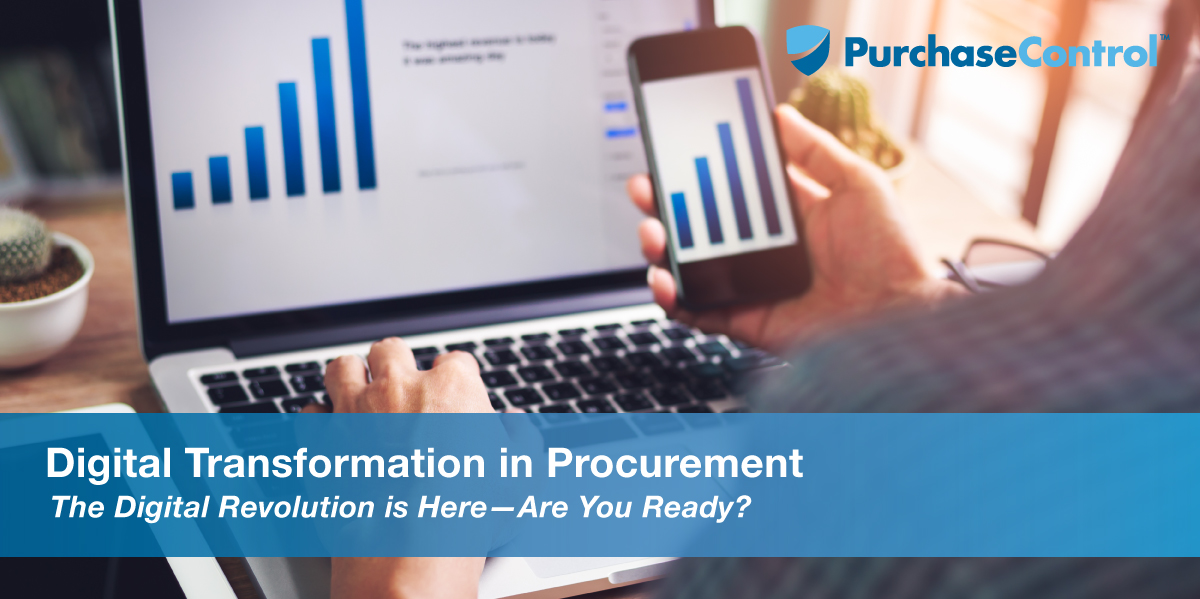The challenges facing procurement teams are complex and ever-evolving. And as more and more of the world’s business is conducted not by paper, phone, or fax, but in the virtual realms of the global online marketplace, the future of effective procurement lies not just in what a procurement department researches, buys, and manages, but how.
With the ubiquity of software solutions for everything from the basics like email and productivity software to the truly high-tech (advanced Enterprise Resource Planning (ERP) suites, procurement software solutions, etc.), you might think the world has tossed aside its analog past in favor of the shiny digital future. But for procurement departments of all sizes, embracing and implementing digital procurement technology comes at a price some aren’t yet willing, or able, to pay.
A 2018 report by research firm The Hackett Group indicates that world-class procurement organizations can achieve savings of 70% or more per order through their embrace of next-gen tech. Somewhat shockingly, however, only 32% of procurement teams have a formalized digital strategy. Ready or not, digital transformation in procurement departments around the globe is quickly defining the line between companies who seek a true competitive advantage, and those who may find themselves left in the digital dust.
What is Digital Transformation?
While it might sound like a fancy term for sleight-of-hand, digital transformation is actually a comprehensive embrace of digital technologies by a business or organization. The goal is to increase productivity, identify and create sources of enduring value, and streamline business processes to improve efficiency.
For procurement organizations, the digital revolution is focused on developing eProcurement solutions that move beyond simple cost reduction and create new opportunities for more effective procurement processes, from supply chain management to big data analytics.
This transformation touches every industry, in both the demand and supply markets. It’s an on-demand world; one-click orders, same-day delivery, social media-based customer support, and instant access to, well, everything make maximum convenience and minimal hassle the name of the game. Consider the ways in which companies like Uber, Amazon, and GrubHub (for example) have transformed the marketplace and redefined customer expectations for user experience, personalization, and customer service, and you can begin to see how embracing a digital procurement transformation can help you leverage these changes to build a stronger value chain for your own organization.
“Digital procurement boosts efficiency and shifts the role of Chief Procurement Officers (CPOs) and other procurement professionals away from cutting costs and toward more advanced capabilities focused on creating lasting value for the company.”
The Challenge of Digital Transformation in Procurement
Poised as it is between vendors in the supply chain, in-house “customers,” and assorted executive stakeholders, procurement occupies a singular role within a business. A team looking to succeed in embracing digital procurement transformation needs:
- A comprehensive digital strategy, with clearly defined goals and an operating model oriented toward growing value rather than reducing expenses
- A supportive culture and backing from not only the executive team, but the entire business or organization
- An understanding of, and access to, basic and advanced digital procurement technologies
That last item is perhaps the most difficult for companies with a culture built and focused on old-school procurement solutions. But as the Hackett Group discovered in their 2018 study, the value to be gained through eProcurement—like the risk of maintaining the status quo— is simply too great to ignore. The digital transformation is rapidly changing how every procurement process, from contract management to procure-to-pay (p2P) to risk management, is handled.
How Digital Transformation Benefits Procurement Organizations
Total real-time spend visibility. Centralized control with decentralized security. Simplified vendor selection and management. These are just a few of the benefits digital procurement brings to the table through a blend of big data and next-gen tech.
Big Data Drives Big Insights
Charting a path to success is tough when you don’t have a map, a compass, or any idea whether you’re even on the right road. Digital technologies enable organizations to collect information in quantities, and with granular detail, far beyond the limits of pen-and-paper procurement. When you have, for example, absolute transparency with regard to every stage of every transaction, as well as real-time access to the full contract and service details of every vendor in your supply chain, you can begin to spot trends, identify redundancies, and begin to build a digital strategy that optimizes your spending.
All this information greatly simplifies procurement processes like risk and category management, too, since you can easily identify, track, and manage vendors based on their capabilities, support and service options, and performance.
Artificial Intelligence—Real Results
With the growing processing power of modern computer systems, it’s possible to achieve data collection, analysis, reporting, and planning at levels that were simply impossible with analog tech. New technologies leverage this massive computational power to augment human capabilities and, in some cases, even surpass them. Digital procurement boosts efficiency and shifts the role of Chief Procurement Officers (CPOs) and other procurement professionals away from cutting costs and toward more strategic roles focused on creating lasting value for the company through:
- Cognitive Procurement, which is driven by artificial intelligence and can connect such seemingly disparate procurement technologies as automated decision making, advanced analytics, and procurement-as-a-service to build value while reducing costs, improving accuracy, and saving time.
- The Internet of Things (IoT), aka the ever-expanding network of always-on, always-connected drones, self-driving vehicles, robots, and smart appliances that integrate with procurement solutions to support and simplify procurement processes.
- Blockchain, which achieved fame as a key component of the burgeoning virtual currency market, but is also a powerful decentralized digital security tool. It benefits procurement through the creation of a “digital ledger,” which is decentralized and designed to be, for lack of a better term, “hack-proof.” This both simplifies and strengthens contract management and risk management, since it supports document verification and certification without the need for a third party, provides a detailed history of all changes and versions of each document, and ensures ironclad security for both procurement and legal teams.
The Only Constant is Change
The digital revolution is sure to have its casualties—after all, no amount of software, servers, or smart cars can guarantee success. Technology spurs new and creative solutions to our oldest problems, but ultimately, the real digital transformation in procurement, and the success it brings, is driven by people. Taking the time to master emerging procurement technologies, engage your entire organization in their implementation, and focusing on value will help make sure your procurement team is a key part of your business’ success, both today and in the digital-driven future.
Transform Your Business with PurchaseControl's Digital Procurement Solution
Find Out How








